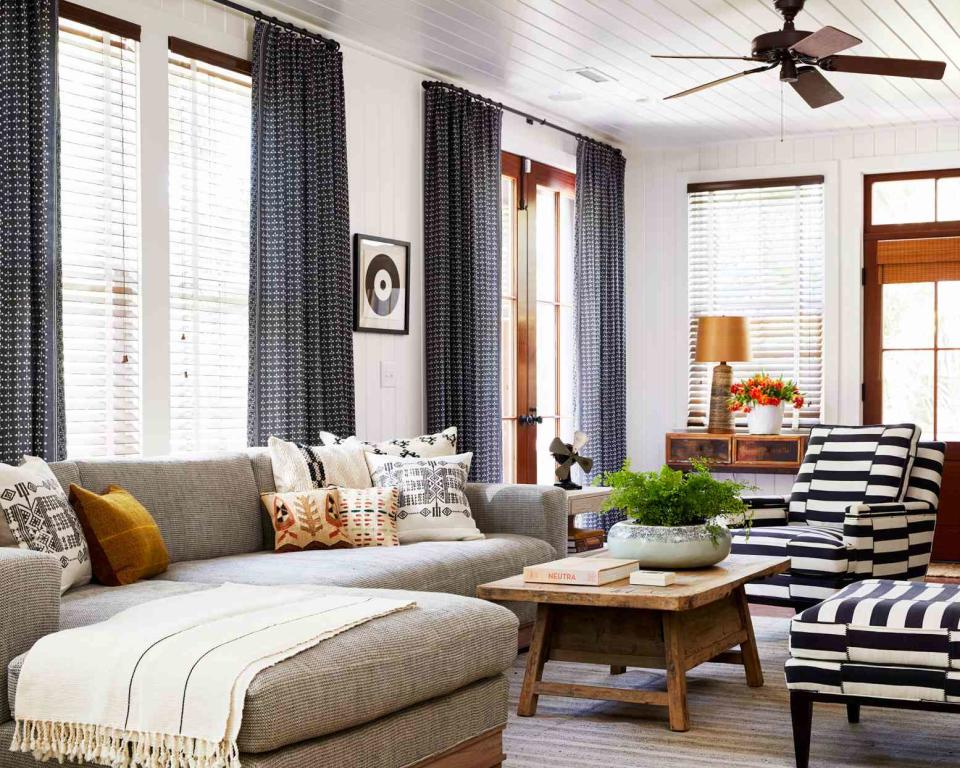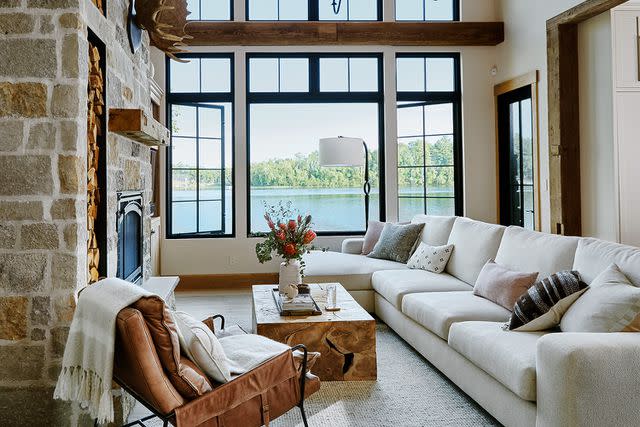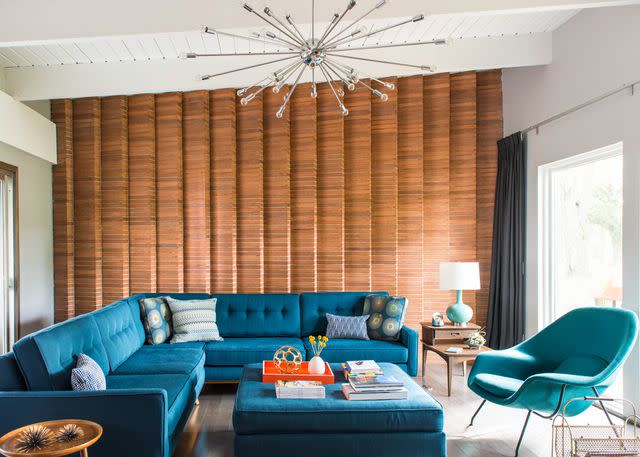Oversize Furniture Is Taking Over Living Rooms Everywhere
Here's how to get in on the larger-than-life furniture trend, straight from the experts.

It's no surprise that home trends that focus on maximal comfort are some of the most popular. And while the oversized furniture movement likely started over the past couple of years as we spent more time at home, how we’re using our spaces now is integral to its staying power. “Now that we’re opening back up and hosting parties and gatherings, we’re better able to understand how our spaces really work when multiple people are using each room,” says Benjamin Reynaert, editor and creative director at Benjamin Reynaert Creative. And the consensus? Bigger is better.
Brittany Farinas, CEO and creative director of Miami-based House of One, agrees, adding oversized furniture is not only inviting, but it’s a good conversation starter too, with plenty of room for guests to mingle in comfort.
Best of all, to get in on the trend, you don’t necessarily need a palatial home. Instead, think about maximizing your floor space. “A chaise or chair and ottoman is a great way to activate an underutilized corner and create a little nook that’s super cozy,” says Reynaert. “Ottomans are also super versatile and can be moved around the room for additional seating when entertaining.”
Above all else, getting this trend right means doing what works for your space. Reynaert suggests viewing a piece of furniture in person (for example, in a showroom) before ordering to ensure it will play well in your home and with your existing decor. “I tend to gravitate toward lighter colors and tones for larger pieces so they’re less visually heavy,” he adds. This also makes it easier to swap out throw blankets and pillows.
If you’re ready to dive into this larger-than-life aesthetic, read on for everything you need to know about the oversize furniture trend.

Victoria Pearson
What Is the Oversize Furniture Trend?
So, how big are we talking? Farinas says oversize pertains to anything that is at least two times the size of a regular piece of furniture, with the most common item being couches. “I think the oversize furniture trend is somewhat a response to spending more time at home and designing our homes to be cocooning and extremely comfortable for the whole family,” says Reynaert. “I'm seeing a trend toward deeper sofas that you can really curl up into, whether for reading a good book or binging the latest television series.” Along with that comes the rise in popularity of bench cushions, where avoiding the no-man’s land between seats is no longer an issue.
How to Use Oversize Furniture
“The best way for readers to get the look is to opt for a corner sectional in the family room or den if you have the space,” says Reynaert. “I like to nestle these pieces in between or in front of bookshelves and to hang wall sconces at each end to accentuate the custom feel and for additional reading light. There's nothing cozier than a piece that feels custom-made for your space, even if it's not!”
Reynaert says you can go for the gusto by carving out a conversation pit with a fully customized piece. But if you want to play it safe, there are still plenty of ways to get in on the action. “Play with perspective,” suggests Farinas. “The furniture itself doesn’t have to be oversized. Decorative pillows or tall plants are a great way to introduce the oversized trend into your home.” She suggests trying to keep the trend focused to areas where you spend a lot of time. The living room or den is a popular choice, but it can also work in a bedroom if space allows.
Finally, know that not every piece needs to be hardworking. “You can also choose pieces that are more whimsical and add a sense of playfulness,” says Lance Thomas, principal designer of Thomas Guy Interiors.
:

Kim Cornelison
Pay Attention to Proportions
Reynaert’s rule for oversized furniture: “Measure twice (or three times!) and buy once.” He often sees furniture with sizing or proportions that don’t work for the space. “If you’re looking to buy a sectional, measure your space accurately and map out the dimensions of the sofa you’re looking to purchase with tape on the floor,” he says. “Sometimes it’s helpful to use stacks of boxes to help understand the 3-D volume the piece will take up visually in the space as well.”
If you have a two-story living room, Reynaert says a standard three-seat sectional could look minuscule. Instead, he suggests opting for a bigger option or a modular approach where additional pieces can be added to help round out the space. “Similarly, small furniture isn’t necessarily the solution for small spaces,” he says. “I love a big, comfy sofa that may go wall to wall in a small den, which maximizes comfort when you’re using the space versus a tiny sofa that you’ll never use.”

Supporting Furnishings
Getting the feel right requires taking in the surroundings. Thomas warns too much oversized decor can wind up looking comical, so getting the supporting players right is key. “If you have a large and imposing sofa, try and balance that piece with a pair of armchairs that have a lot of airiness to the design (open legs or open backs) to help offset the larger piece,” says Reynaert.
That said, if you’re working with an oversize sofa, he says a big coffee table and at least three light sources (think a large table lamp on one end, a tall, thin floor lamp on the other, and a pendant overhead) are necessary for the right balance. “I like to ensure there are enough places for everyone to set down their drinks too, so a couple of floating drinks tables help balance out a furniture scheme in a large room,” he advises.
Once you have your plan together, make sure there’s still plenty of breathing room between pieces. “Placing items too close together will make the room feel cramped,” warns Farinas. She also suggests ensuring everything ties together to create a cohesive look. “You could try matching textures like velvet or complementary colors like blue and gray,” she suggests.
If you’re still nervous about committing to a sofa, settee, or another investment piece, consider taking this oversize trend more small-scale. “You can choose a decor item rather than a main piece of furniture,” says Thomas. “A large floor lamp is a great use of the trend and is very accessible.”
